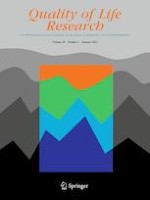09-09-2020
Interpersonal and intrapersonal manifestations of HIV stigma and their impacts on psychological distress and life satisfaction among people living with HIV: Toward a dual-process model
Gepubliceerd in: Quality of Life Research | Uitgave 1/2021
Log in om toegang te krijgenAbstract
Purpose
As HIV is one of the most stigmatizing health conditions, people living with HIV (PLHIV) continue to experience multiple forms and sources of stigmatization, which negatively impact their quality of life. The present study proposed a dual-process model to understand the different manifestations of HIV stigma and examine how they relate to each other and affect psychological distress and life satisfaction in PLHIV.
Methods
Two hundred and ninety-one PLHIV in Hong Kong participated in the study and completed a self-report questionnaire on HIV stigma, psychological distress, and life satisfaction. Structural equation modeling was conducted to examine the mechanisms underlying HIV stigma and mental health.
Results
Around one-third of the participants experienced HIV-related avoidance and/or discrimination in different domains of life over the past year. Enacted stigma toward PLHIV was highly pronounced in Hong Kong, especially among general healthcare providers. The results revealed the interpersonal and intrapersonal processes underlying HIV stigma and mental health. While enacted stigma had a direct effect on psychological distress and life satisfaction, PLHIV might also internalize the stigmatizing beliefs associated with HIV identity, which were related to greater psychological distress and poorer life satisfaction.
Conclusion
Stigma reduction programs that target non-HIV healthcare workers are recommended to confront their misconceptions and biases toward PLHIV. Given the high prevalence of self-stigma, psychological interventions that focus on restructuring negative beliefs about PLHIV and reconstructing a self-empowering and positive identity are necessary to promote better mental health and quality of life.
